Torres del Paine
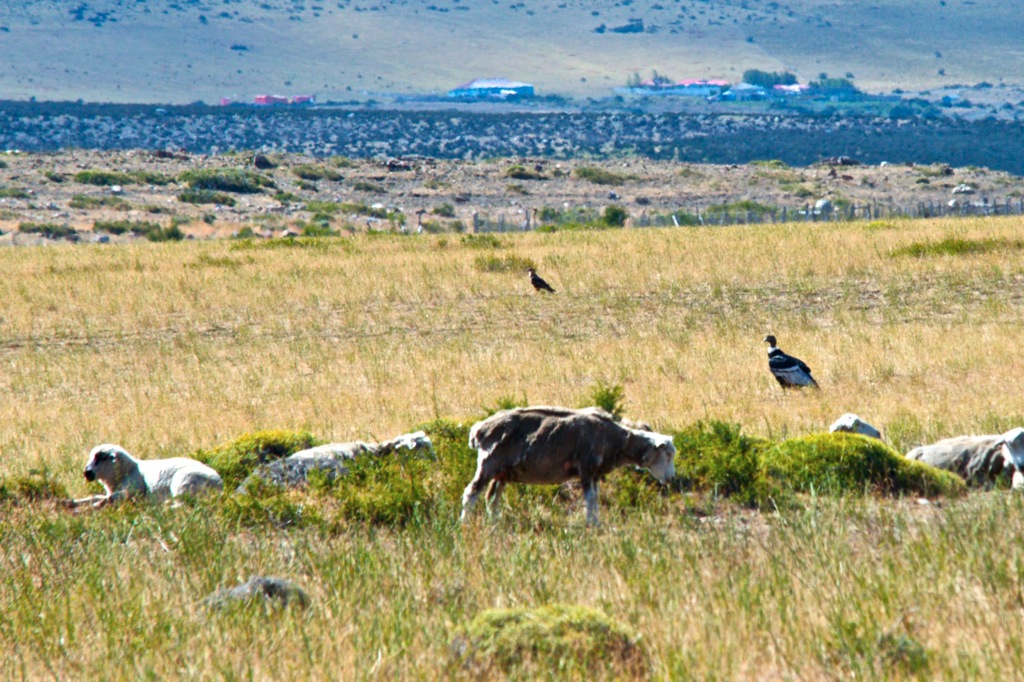 The park has, next to the famous ‘towers’, also an enormous area of other mountains, with glaziers, lakes and rivers on offer. It is – among others – also the home of Puma’s and Condors. A puma did not show, but all of a sudden the bus stopped and there were 4 or 5 Condors flying above us. By the time we got out of the bus though, they had all landed and were sitting between the sheep. I hoop I’ll get an other shot at them somewhere because they are very impressive in the sky. As sitting ducks that was less the case, although one can see how big a bird it is.
The park has, next to the famous ‘towers’, also an enormous area of other mountains, with glaziers, lakes and rivers on offer. It is – among others – also the home of Puma’s and Condors. A puma did not show, but all of a sudden the bus stopped and there were 4 or 5 Condors flying above us. By the time we got out of the bus though, they had all landed and were sitting between the sheep. I hoop I’ll get an other shot at them somewhere because they are very impressive in the sky. As sitting ducks that was less the case, although one can see how big a bird it is.
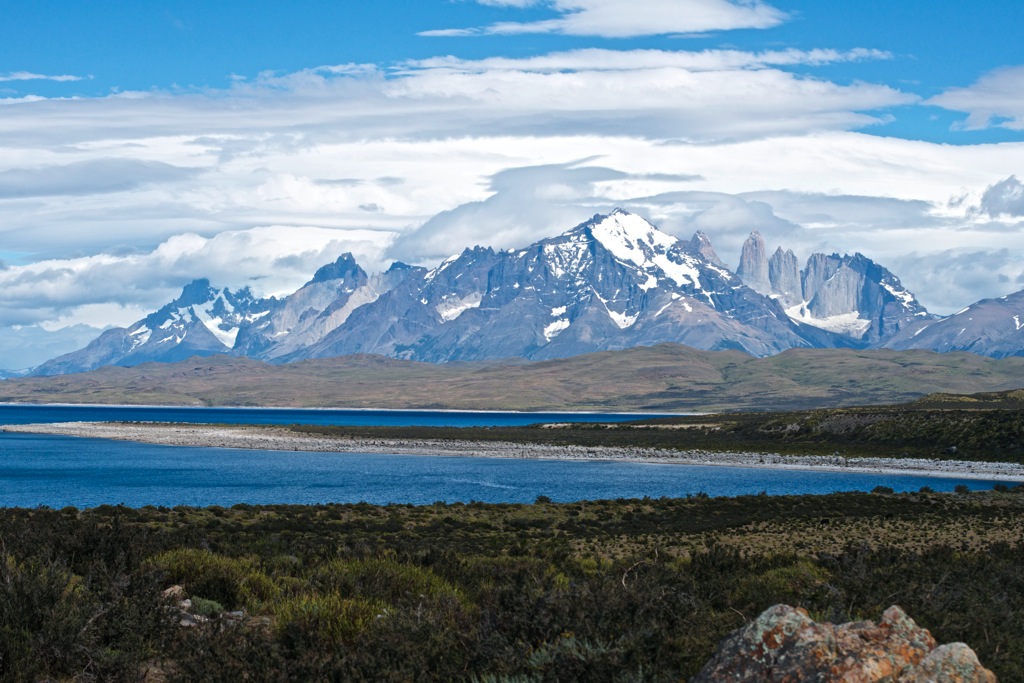 The first view I got from the Torres del Paine, overlooking a blue lake with a clear white rim. It is the Sarmiento Lake that has a pH of 9 in which no animal life is possible. It resembles in a way the original chemical soup, in which life began. The cyano-bacteria however can work its process of photosynthesis, by which they produce calcium carbonate skeletons. That is how the white rim around the the lake got so clear. So, near the ‘end of the world’ one can still fined places that resemble the situation in which life began.
The first view I got from the Torres del Paine, overlooking a blue lake with a clear white rim. It is the Sarmiento Lake that has a pH of 9 in which no animal life is possible. It resembles in a way the original chemical soup, in which life began. The cyano-bacteria however can work its process of photosynthesis, by which they produce calcium carbonate skeletons. That is how the white rim around the the lake got so clear. So, near the ‘end of the world’ one can still fined places that resemble the situation in which life began.
 Life is very visible in the flocks of Guanacos, a wild type Lama’s, that jumps gracefully across the fences that are lining the roads. This type of Lama can’t be domisticated, because they jump over the highest fences. Their meat is however very tasty and therefor farmers crossbreed them with an other type that can be domisticated. Normally hybrids can’t reproduce, but these can. The farmers don’t let them though, because they want to prevent the breed from degenerating.
Life is very visible in the flocks of Guanacos, a wild type Lama’s, that jumps gracefully across the fences that are lining the roads. This type of Lama can’t be domisticated, because they jump over the highest fences. Their meat is however very tasty and therefor farmers crossbreed them with an other type that can be domisticated. Normally hybrids can’t reproduce, but these can. The farmers don’t let them though, because they want to prevent the breed from degenerating.
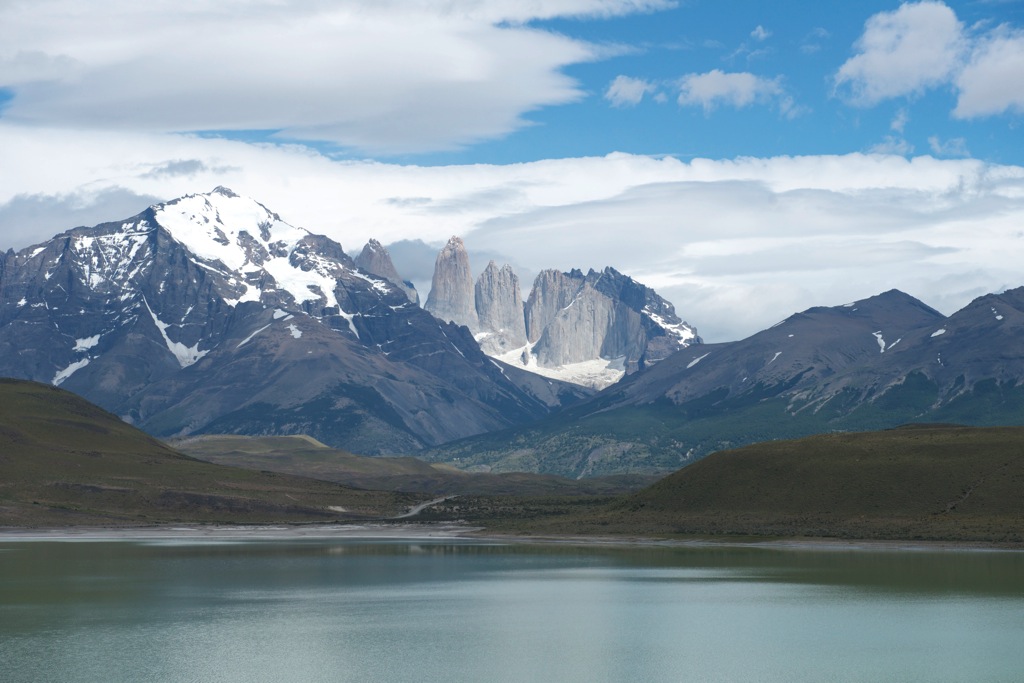 Another view on the Torres del Paine. This time overlooking a green lake that get its color from algae.
Another view on the Torres del Paine. This time overlooking a green lake that get its color from algae.
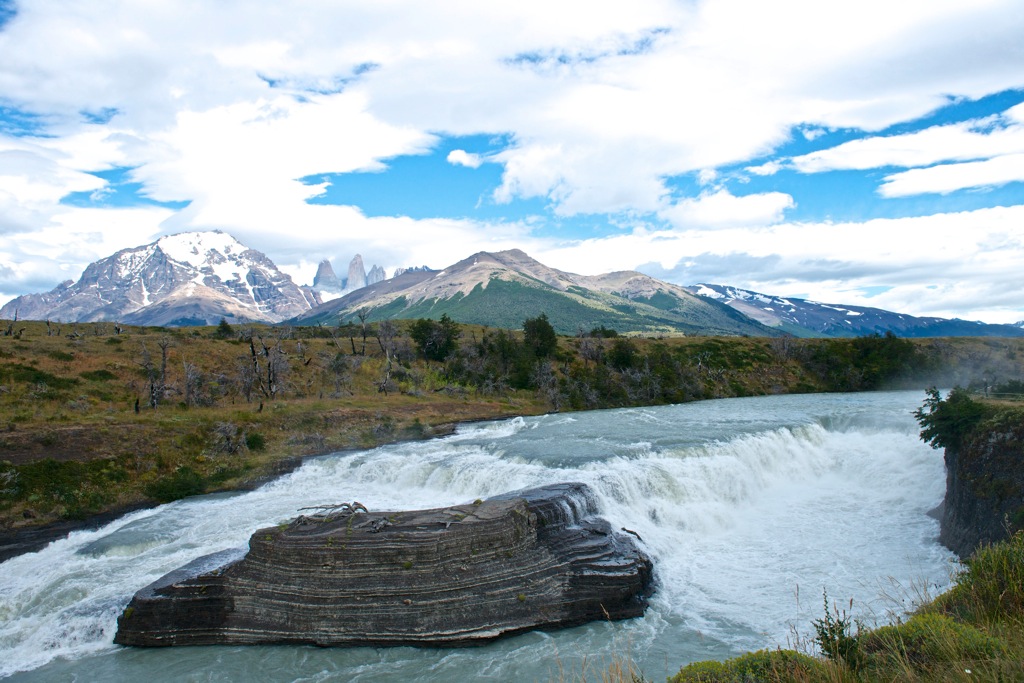 In the foreground, one of the rivers in the park that are formed by the water coming from the glaziers.
In the foreground, one of the rivers in the park that are formed by the water coming from the glaziers.
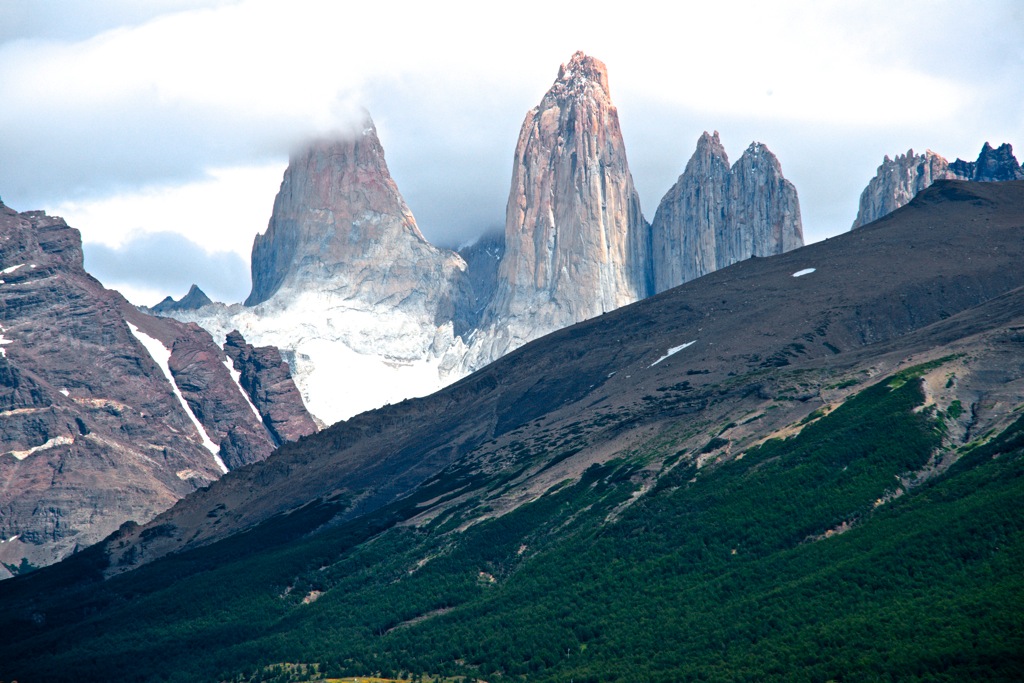 When the sun changes position the color of the Torres change and it become clear that the rock is made up in different layers
When the sun changes position the color of the Torres change and it become clear that the rock is made up in different layers
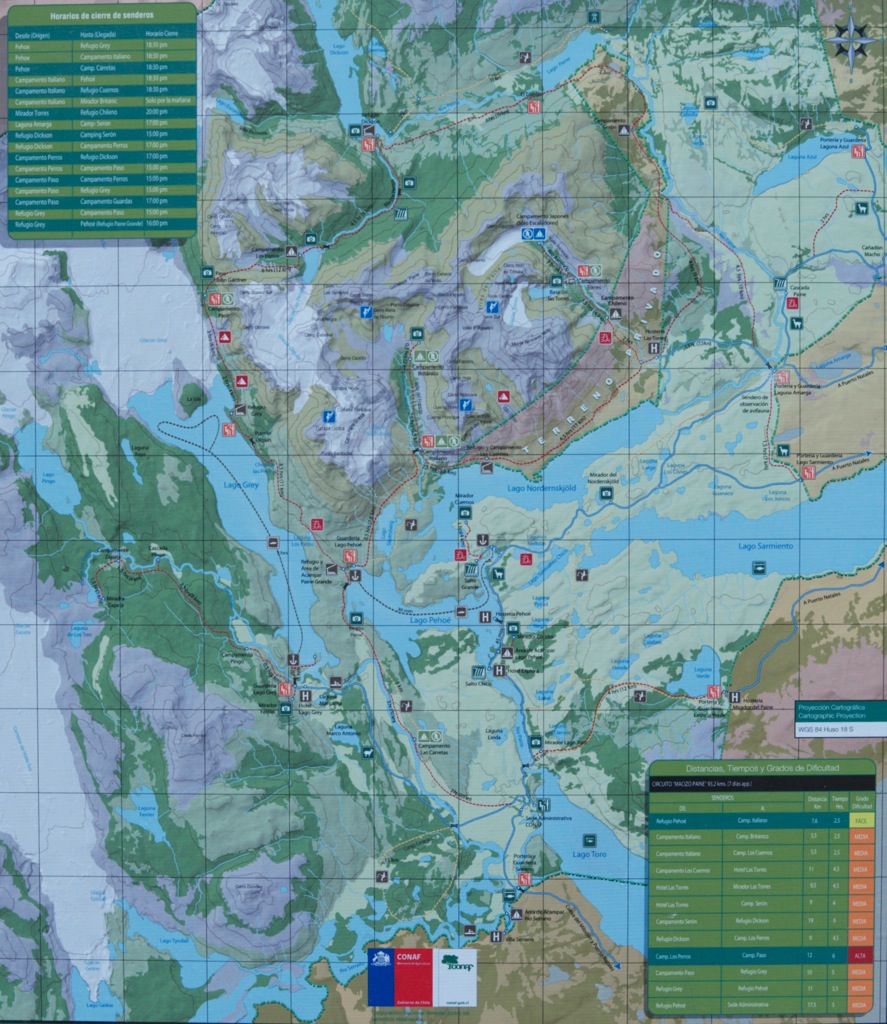 Just to get an idea about the layout of the park I took the picture of one of the maps that are placed on different locations in the park. If you to the top half of the map, you see on the left water that comes from a big glazier. To the right of that is a green strip (a valley) and onthe right of that there is an other such valley These three ‘legs’ of the “W” form a hiking tour, that takes experienced hikers 5 days. On different places there are camping sites and also other sleeping accommodations (for those who do not want to carry a complete camping outfit).
Just to get an idea about the layout of the park I took the picture of one of the maps that are placed on different locations in the park. If you to the top half of the map, you see on the left water that comes from a big glazier. To the right of that is a green strip (a valley) and onthe right of that there is an other such valley These three ‘legs’ of the “W” form a hiking tour, that takes experienced hikers 5 days. On different places there are camping sites and also other sleeping accommodations (for those who do not want to carry a complete camping outfit).
There is also a track that is called “The circle”. Together with the Kayaking and horseback riding it makes Puerto Natales a world famous center for out door sports.
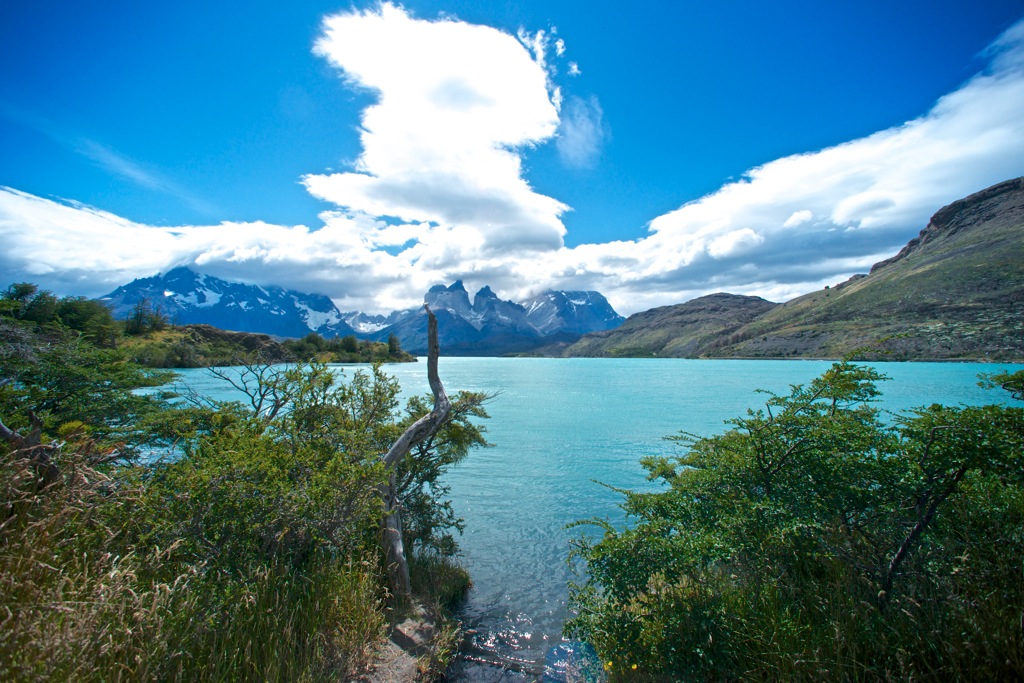 This is water comes from the big glazier that I referred to on the map. This water has, what in printing/photography is called, the color Cyan. While sailing on the ocean, I explained to people who did not understand why the water of that ocean could change color: “The water takes the color from the sky above it”.
This is water comes from the big glazier that I referred to on the map. This water has, what in printing/photography is called, the color Cyan. While sailing on the ocean, I explained to people who did not understand why the water of that ocean could change color: “The water takes the color from the sky above it”.
Here in the Torres del Paine Park it is quit different. Here you see the third color that a lake can have, under the same blue sky. The cyan color comes from the sediments that the glazier scrapes from the rocks and get into the water of the glazier lake. Maybe we could call it Patagonian Color Management.
In (South) America everything is bigger and blue(er). Great